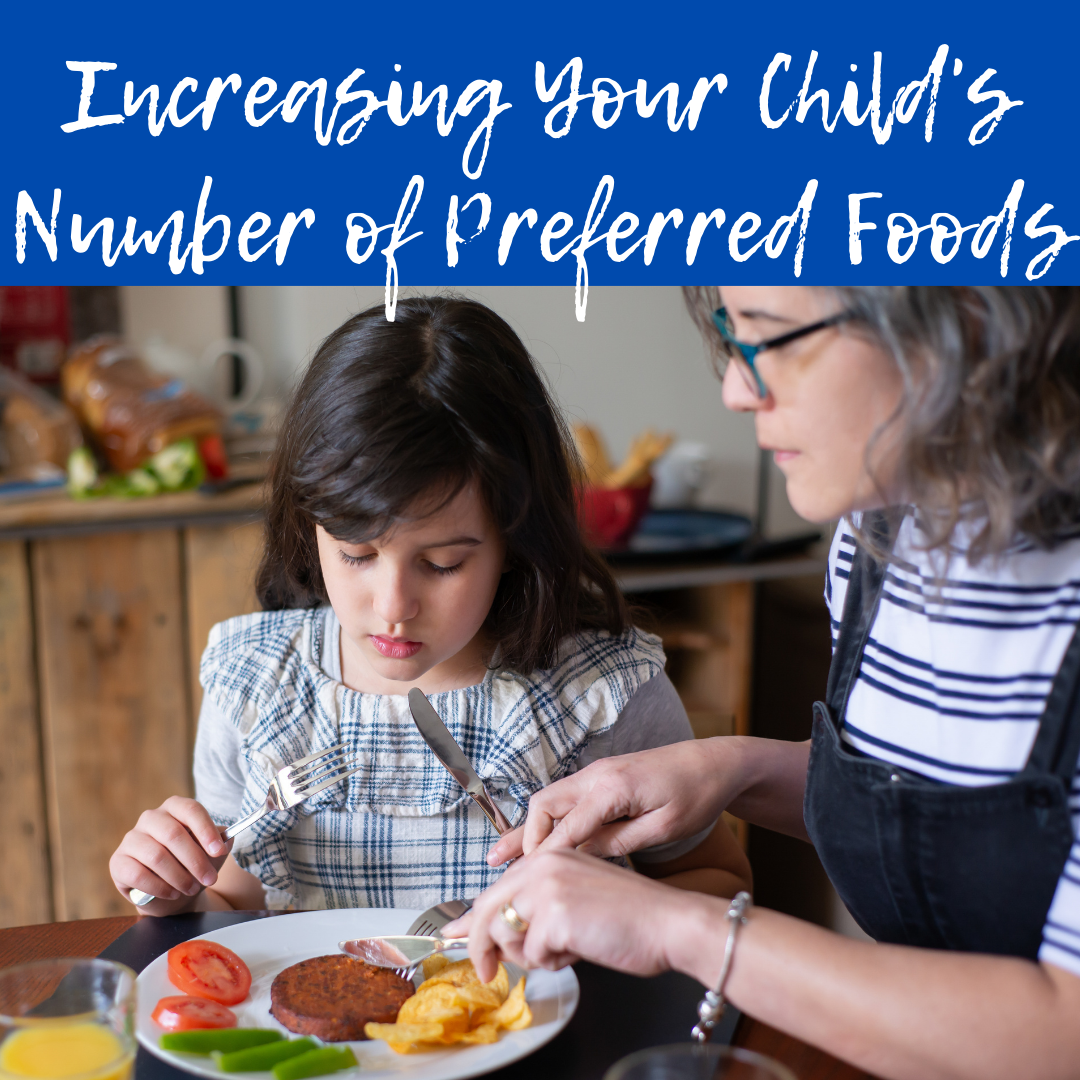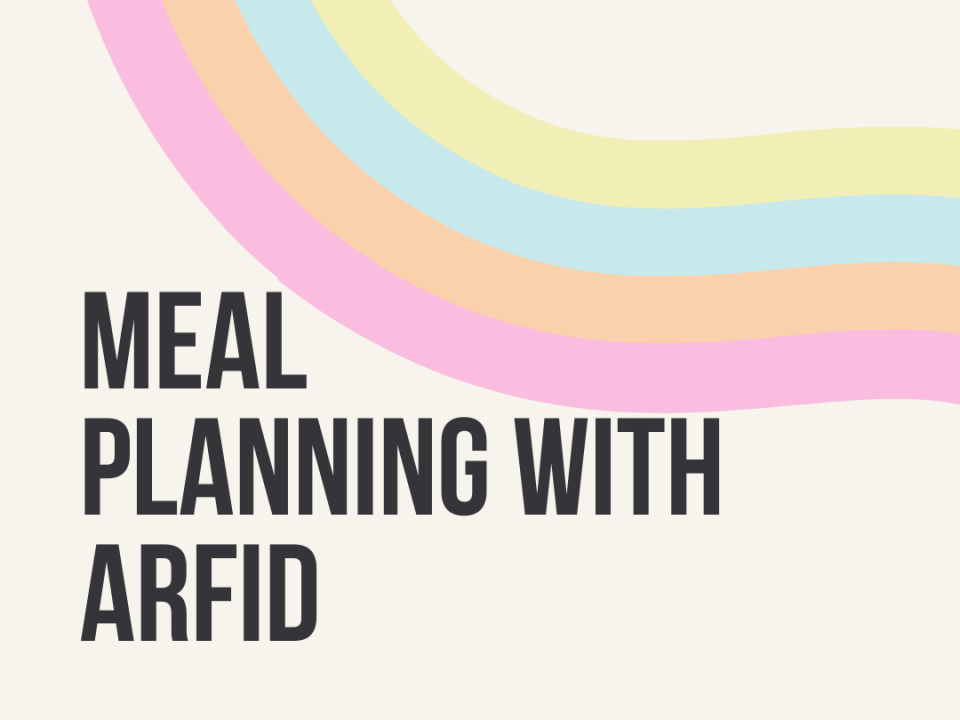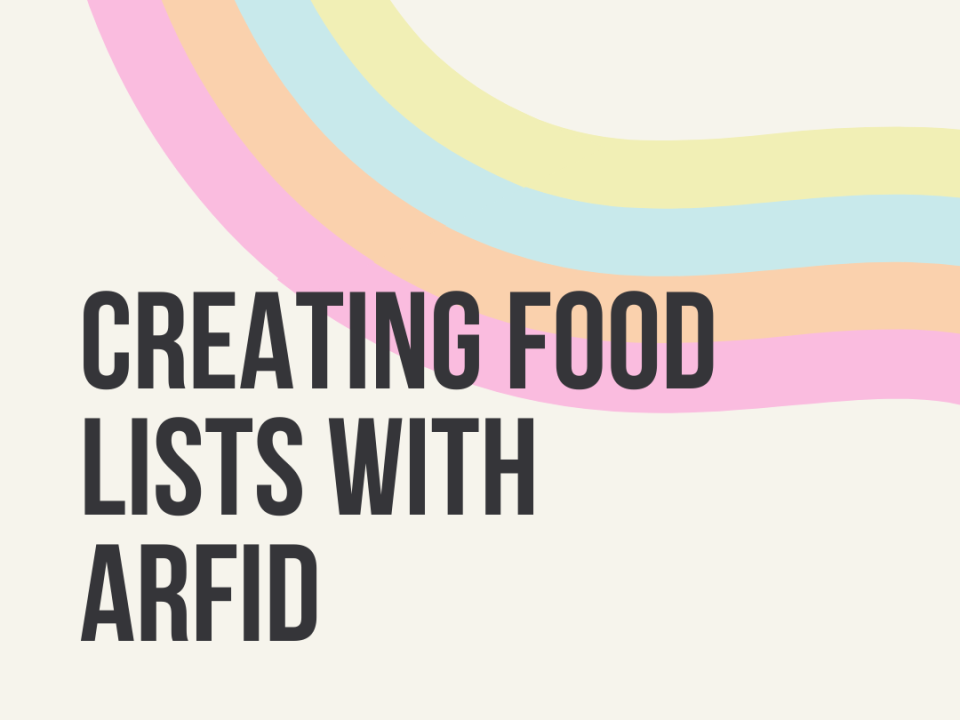Increasing Your Child’s Number of Preferred Foods

Food and Kitchen Activities for Oral Sensory Avoidant Eaters
December 15, 2021
The Intersection Between ARFID and Neurodiversity
August 30, 2022Many of the families I work with have children who have a very small number of preferred foods. When I say preferred I mean foods that they will regularly consume without any hesitation, worry or fear. And getting them to eat a new food or non-preferred often comes with a negative response like a tantrum, gagging, food refusal, or anxiety/fear.
Yes that’s right eating new or non-preferred may cause fear and anxiety. This anxiety often decreases their appetite and willingness to eat. Much of my work with families is around decreasing fear and anxiety around food and eating to increase a child’s readiness to try a new food.
Sometimes this anxiety and fear is in the parents. Fear their child isn’t growing well, fear their child is not getting the right nutrients, fear they are eating “too much” of something or “not enough” of something else. This fear often is felt by their kids and comes out as a form of pressure. Encouraging new foods that their child isn’t ready for or pressuring them to eat certain foods and restricting other foods. Knowing your child is growing well and getting in the right nutrients can be a big relief to parents and help them implement new strategies that work to expand their child’s preferred food list.

5 Things You Can Do Today to Increase Your Child’s Number of Preferred Foods
#1. Make a meal and snack schedule
If you don’t have a consistent eating schedule make one. Kids, especially young kids, need to eat every 2-4 hours during the day. Going too long between meal times can cause extreme hunger( insert hangry tantrum) and too short lack of hunger. Both of which make it difficult for kids to be ready to try new foods. Consistency and reliability of eating times (i.e. they know they are going to get food without having to ask) can help kids feel a sense of food security which lessens anxiety or fear around food and eating.
Example schedule:
Breakfast 7-8am
Snack 10-1030
Lunch 12-1pm
Snack 3-30pm
Dinner 530-630
Bedtime snack (optional) 8pm
#2. Get your child’s input
What foods would they like to try? Start there first. I often find parent’s focus on getting their kids to try more fruits and vegetables first but these are difficult foods to get kids to prefer. Fruits and vegetables, especially fresh, are not consistent in flavor or texture making it hard to accept consistently. Sometimes working on accepting foods in another group of foods (even beverages or snack foods) is what they need to reduce anxiety around just trying new foods in general.
#3. Make small changes.
A child who only accepts a few foods is not going to accept many new foods a day or each week. Start slow pick one new food to try, or way to serve a food at a time. Some children are very brand specific (i.e only like one brand of chicken nugget, cheese stick or applesauce). If this is the case for your child, try working on flexibility within a food. For example, try a new brand of chicken nugget. Get their input by going to the grocery store and picking out another brand together. Letting them select the food will also help reduce their anxiety when it comes time to eating the new food.
#4. Offer new, non-preferred or tolerated (but not preferred) foods along side preferred foods.
Having foods that are accepted and preferred on the table or on their plate reduces a child’s anxiety at the meal because they know there is something they can eat and fill up on. If putting a new food on their plate increases anxiety, try offering it on a serving plate that they can serve themselves from if they want to try it or interact with it. If you are making changes to a preferred food (i.e a new chicken nugget brand) make sure there is another preferred food available in case they don’t accept the new chicken nugget.
#5. Take the pressure off.
Forms of pressure include pressure to take a bite of a food, food praise for eating, and closely watching and responding to eating/not eating. This pressure can increase a child’s anxiety at the table therefore decreasing their appetite and willingness to eat. Instead eat together and just expose them to a variety of foods, offer food on their plate or family style and let them decide if they are going to eat or interact with it or not. If they do eat it keep the excitement to yourself! Maybe do a little dance in your room later 😉
Need more personalized help improving your child’s eating and increasing their preferred food list? I am currently accepting new virtual client. You can contact me directly here.



